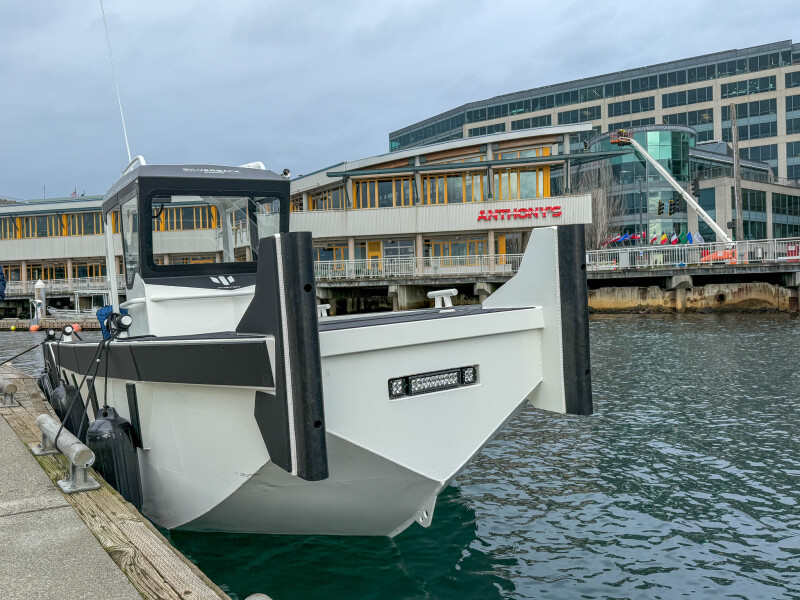What will the workboats of the future look like? Photon Marine, a Portland, Ore.-based developer of electric propulsion systems, believes that its technology will be sought out by vessel owners and operators that are seeking ways to improve efficiency, environmental performance and their bottom line.
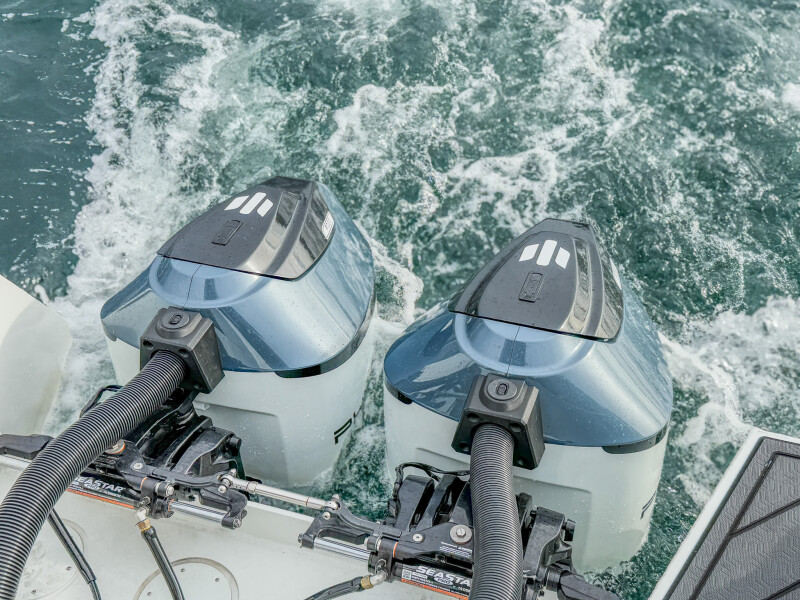
It’s widely recognized that hybrid and electric vessels typically cost more initially than diesel-powered boats, with fully electric propulsion systems sometimes costing up to three times more. However, despite these higher initial costs, there are still financial incentives to adopt these cleaner technologies, according to Charles Steinback, cofounder and vice president of business development at Photon Marine.
“People understand that there is a significant potential cost savings with the rising cost of fuel,” Steinback said, also pointing out the reduced maintenance costs associated with electric propulsion systems. “It’s obvious that [this technology] is good for the environment, but [the cost savings over the total lifespan of the vessel] will ultimately drive the uptake.”
Steinback founded Photon in 2021 alongside Marcelino Alvarez, CEO, and Nick Schoeps, CTO. Since then, the team has developed and refined their product, which is scheduled to enter commercial production from Portland in 2025.
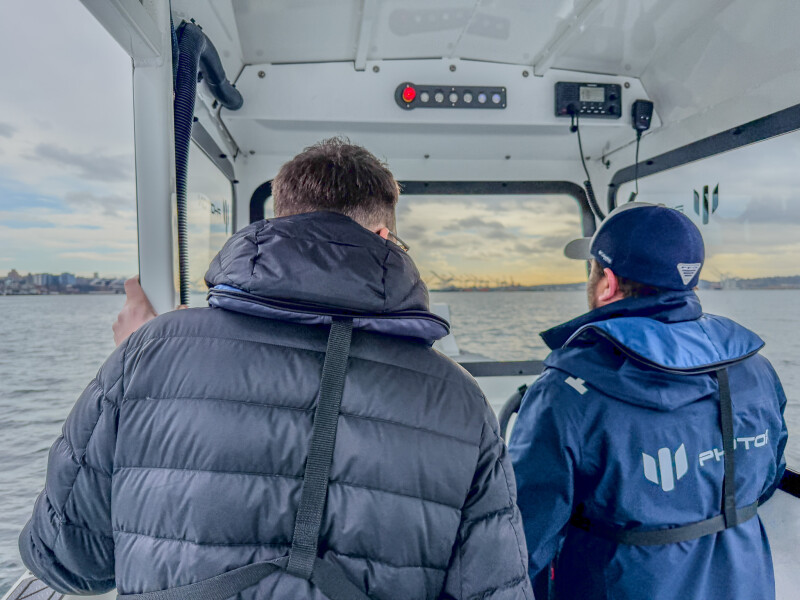
At peak, Photon Marine’s flagship P300 electric outboard offers up to 300 hp and 500 newton meters (Nm) torque. Notably, it operates silently without any vibration or emissions.
At the Pacific Marine Expo in Seattle, Photon conducted on-water demonstrations, giving attendees the chance to experience its electric outboards installed on a Silverback Marine-built Grizzly aluminum workboat. The 24-foot vessel, which features dual motors and a pair of 63-kilowatt-hour (kWh) battery packs, has an estimated range of about 30 nautical miles, cruises easily at 25 knots (at roughly 65% percent power) and can reach a top speed of 40 knots. It can be charged overnight on Level 2 (240 V) or in 45 minutes using DC fast charge.

Steinback acknowledged that electric outboards, like any technology, have their limitations, but he emphasized that the technology will continue to improve, especially as battery systems advance. “We’re not for everybody,” he said. “But there are many applications where our technology is a great fit.”
Photon Marine sees opportunities across several segments and vessel types, such as research and survey, mariculture, dredge and marine construction support, harbor patrol, eco-tourism and water taxis, crew transport, and ports and utilities, among others.
“Our focus is completely on the commercial market because that’s where the [charging] infrastructure is going to be established first,” Steinback said. The company has focused on developing partnerships with ports and utilities to help accelerate the adoption of its technology.
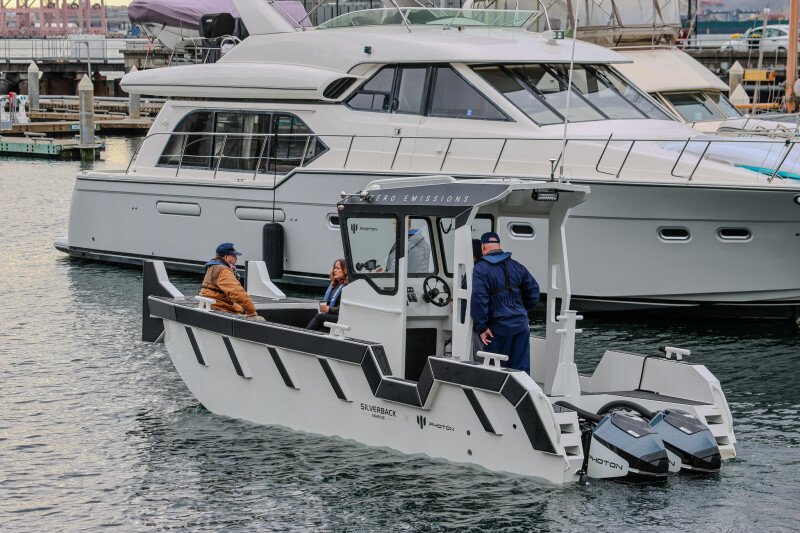
Photon’s electric outboards are currently being put to the test on the U.S. East Coast under a two-year lease agreement with the New York Power Authority, with additional projects planned in other locations. “We have about 20 units that are scheduled,” Steinback said.
On the West Coast, Photon Marine is supporting the Port of Friday Harbor, which was recently awarded $7 million as part of the Washington State Department of Transportation’s Port Electrification Grant Program. The initiative will see the port deploy up to five electric vessels, including a 24' pumpout vessel, a 24' workboat and a 28' passenger transport boat.
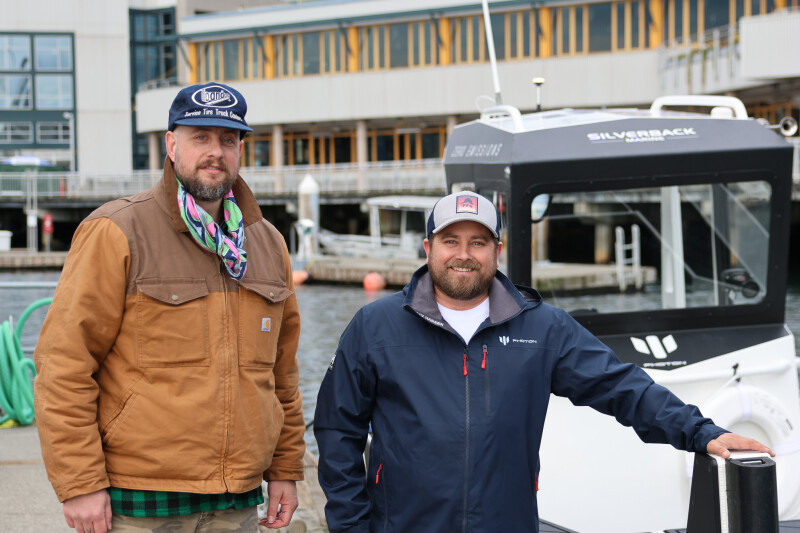
Ultimately, electric workboats are part of a wider push toward sustainability, Steinback said. “This is more than just electric boats. This is about energy independence and resilience and creating opportunities for coastal communities and working waterfronts to start to transition into the future,” he explained.
“We understand that this is a tool, and we’re just trying to make it a better tool — one that is going to cost less and is better for the world,” Steinback said.


